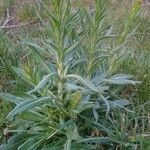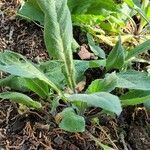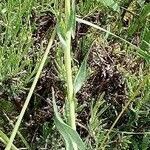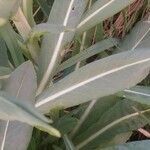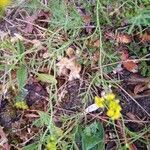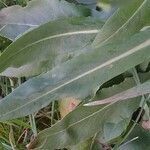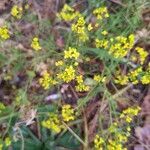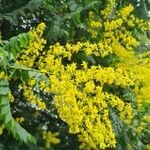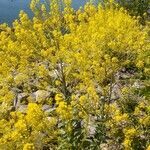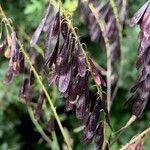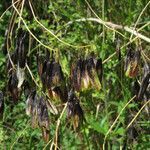Plants glaucous, usually glabrous, sometimes pubescent proximally. Stems (3-)4-10 (-15) dm. Basal leaves: petiole 0.5-5.5 cm; blade oblong or oblanceolate, (2.5-)5-15(-20) cm × (5-)15-35(-50) mm, base attenuate, margins entire, repand, or dentate, apex obtuse. Cauline leaves: blade usually oblong or lanceolate, rarely linear-oblong, base sagittate or auriculate, apex acute. Fruiting pedicels 5-10 mm. Flowers: sepals 1.5-2.8 × 1-1.5 mm, glabrous; petals 2.5-4 × 0.9-1.5 mm, base attenuate; filaments 1-2.5 mm; anthers 0.5-0.7 mm. Fruits black or dark brown, often broader distal to middle, (0.9-)1.1-2(-2.7) cm × 3-6(-10) mm, base cuneate, margins sometimes slightly constricted, apex usually subacute or rounded, rarely subemarginate; locule with distinct midvein, lateral veins inconspicuous, 3-6(-10) mm; apical wing 3.5-5(-7) mm wide. Seeds light brown, 2.3-3.5(-4.5) × 0.8-1 mm. 2n = 14, 28.
Biennial, usually single-stemmed, 5–12 dm, glabrous and glaucous; basal lvs oblanceolate, long-petioled; cauline lvs sessile, lanceolate to oblong, mostly 2–10 cm, entire or nearly so, auriculate-clasping; infl of numerous racemes, forming a large terminal panicle; fls 6 mm wide; frs drooping on short, slender pedicels, oblong to obovate, mostly 8–15 × 2.5–6 mm, thickened and corky in the center; 2n=28. Native of Europe, where traditionally cult. as the source of a blue dye; occasionally found as a weed in our range. May–July.
A cabbage family herb up to about 1 m tall. It can spread 30-60 cm wide. The stems are branching. The leaves are sword shaped. The flowers are in panicles at the ends of branches. They are small and yellow and have 4 petals. The fruit are flat seed pods. They are shiny and purple-black when mature.
